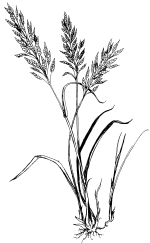
Ant Activities
These are a few activities that will encourage kids to observe ants respectfully and safely. We hope they will make Prairie Creek WMA more accessible to families.

Hypothesis and Observation
Drawing Activity
Do you really know what an ant looks like?
Always remember not to harm the ants or their environment!
1. Draw an ant.
Before visiting the ants at Prairie Creek Wildlife Management Area, draw an ant using your best memory, with as much detail as possible.
2. Find ants.
Once at Prairie Creek, find the ants, and take a closer look. If they’re moving too quickly, try setting out a scrap of paper with some honey. The ants will come to check it out, and pause long enough for a good look.
3. Examine.
Inspect the ants' body parts in detail: use a magnifying glass, or you can even collect a few ants in a Tupperware or insect jar.
Here are some questions to get your observations started:
- How many legs does an ant have?
- How many body segments does an ant have - are they all the same size and shape?
- How can you tell the front end from the back end when an ant is standing still?
- Are they all the same color?
- Are all the ants the same size and shape? Do they all do the same things?
Using a diagram like the one shown below, can you identify any of the body parts during observation?

Ant Diagram. Digital image. Aps Library PAthfinder. Weebly, n.d. Web. 29 May 2015
After making your observations, try drawing again.
With as much accuracy as possible, try to remember all the body parts. What looks different between the first and second drawing? What have you learned?
Ants on a Twig
A group activity adapted from Project Wild

1. Prepare.
Before visiting Prairie Creek, have students design a simple data chart or table to collect and summarize their observations.
2. Find and observe ants.
Locate ants at Prairie Creek and observe them for about 20 minutes. After some time, report observations to the group.
Look for:
- Evidence of how ants take care of their basic needs
- Evidence of what their basic needs are
- Evidence of ant behavior, including how ants move in a line
3. Simulate ant behavior.
Place a flat board on the ground to represent a log. Have students walk in a line along the 'log' to the opposite end. At the other end, collect a food token and head back. As students pass one another going both directions, they have to stay on the 'log' while simulating ant behavior from previous observations. Arms and hands can simulate antennae, touching each other as they pass.
4. Reflect.
Ask students to sit on the log. After they have investigated the ways that ants meet their basic needs for food, water, shelter, and space in a suitable arrangement, ask students to describe the basic similarities and differences between the needs of ants and humans. Assist students in generalizing that, humans and ants have similar basic needs. Summarize the discussion by noting that, although humans and ants are obviously different, both species share the same basic needs, as do all animal species.
Project WILD., & Council for Environmental Education. (2004). Project WILD: K-12 Curriculum & Activity Guide. Houston, Tx: Council for Environmental Education

Mini Experiment
If you want to try out a scientific experiment and learn the steps of the scientific method, you can base your methods on what we did with these instructions on how to design your own mini experiment.
Materials:
Honey
Paper
Flags
A stopwatch
A notebook
Gather the materials and head out to Prairie Creek.
1. Ask your research question:
Pick one of the following or make your own:
- Which habitats do ants prefer?
- How far do ants venture from their homes?
- What kind of bait do ants prefer?
2. Construct a hypothesis:
Predict the answer to your research question before conducting any experiments.
3. Test with experiments:
Design an experiment by choosing one thing to change (a variable) and keeping everything else the same (constant). Place bait strategically so it will answer your question. Examples are listed below, but challenge yourself to come up with your own design first.
To set up a bait station, stake a small piece of paper with a flag so it doesn't blow away. Add a dollop of honey to attract the ants. Generally, it is a good idea to select three sites and set up three bait stations in each location.
To determine which habitats ants prefer: set up bait sites in three different types of habitats
Variable: habitat
To determine how far ants venture from their home: set up bait sites at different distances from an ant hill
Variable: distance from ant hill
To determine what kind of bait ants prefer: set up bait sites in similar locations with different kinds of bait
Variable: bait type
Once the bait sites are set up, begin timing. Record how many ants are at each bait station after 10 minutes have passed. Continue for one hour.
4. Analyze the results:
Organize your data. Did ants visit some bait stations more than others? What patterns do you notice?
5. Formulate a conclusion:
Use your data to answer your research question. Does it match your hypothesis? Sometimes data doesn't answer your question, and that's okay. Maybe it answers a different question, or you can come up with ideas about what went wrong.
Scientific Method image citation: McCorkle, Kent, Dr. Steps of the Scientific Method. Digital image. Chemistry Lesson: Scientific Method. GetChemistryHelp.com, n.d. Web. 29 May 2015.


